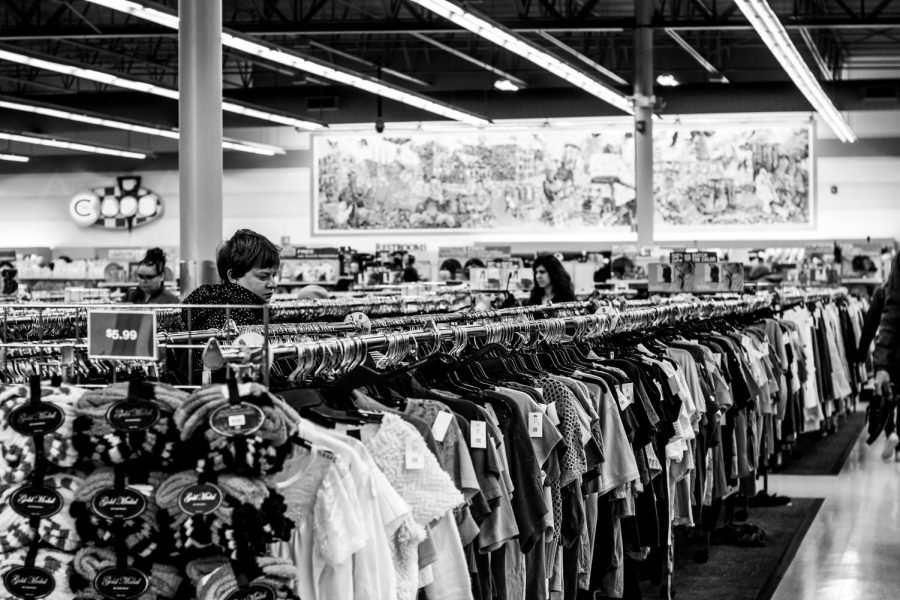Consumers Should Not Support Fast Fashion Brands
September 25, 2020
Fast fashion is inexpensive clothing produced rapidly by mass-market retailers in response to the latest trends. However, what this definition fails to include is the massive negative impact fast fashion has on the planet. As well as the fact that a majority of companies still use child labour, profiting off of the exploitation of children through work, depriving them of their childhood, interfering with their ability to attend regular school, and mentally, physically, socially or morally harming them. Sweatshops are another horrific institution which many fast fashion company’s still use, thus, supporting workplaces with very poor, socially unacceptable or illegal working conditions where the work is oftentimes difficult, dangerous, climatically challenging or underpaid. Although fast fashion companies may seem enticing, due to their inexpensive options, the negative implications of these products greatly outweigh the positives. Due to the unethical standards of these companies, people must stop supporting fast fashion brands.
“Fast fashion’s negative impact includes its use of cheap, toxic textile dyes—making the fashion industry the second largest polluter of clean water globally after agriculture,” Solene Rauterier said in Good On You, a sustainable fashion review website. It is no secret that the availability of clean water on earth is becoming increasingly more limited as the years go by, and fast fashion companies are a leading contributor.
Polyester is one of the most popular fabrics used in fast fashion companies This fabric is derived from fossil fuels, contributes to global warming and, when washed, can shed microfibers that add to the increasing levels of plastic in our oceans. Global warming and climate change are occurring in our environment and the speed and quantity at which polyester fibers are derived, is a major contributor. Since 1990, the consumption of polyester fibers has grown at a sustained rate of nearly 7% per year globally. According to the IHS Markit, a British information provider regarding business, finance, and government, the main competing fiber for polyester is cotton; as a result, the supply and demand balance within the cotton industry affects the polyester fiber industry. In 2010 and early 2011 for instance, peak cotton prices resulting from global supply shortages and low stock levels boosted demand for polyester fibers
Additionally, the rapid speed at which garments are produced means an excess of clothing items are disposed of by consumers, creating a huge amount of textile waste. “More than 501m kg of unwanted clothing ends up in landfills across the nation each year,” Graham Ross said in an article by The Guardian. Fast fashion companies profit solely off the rapid speed at which trends change, so they push and encourage consumers to shop often in order to keep up with these trends, thus leading to heaps of older clothes ending up in landfills. These companies also grossly overproduce goods which only adds to the, already large, amount that end up in landfill.
The clothing industry is responsible for about 10 percent of global greenhouse gas emissions and consumes more energy than aviation and shipping combined, according to the United Nations Environment Program. Every second, one trash truck’s worth of textiles is either burned or sent to a landfill, the U.N. said.
Fast fashion impacts garment workers who have been found to work in dangerous environments for low wages without basic human rights such as unsafe working conditions and long hours of overtime for which employees are not compensated. Many fast fashion companies still institute the use of child labor and sweatshops. “Apple, Nike, Amazon, Samsung, Zara, H&M, Microsoft, Mercedes-Benz, Uniqlo, and more,” Marc Bain, a fashion reporter, said in an article on Quartz, a business-focused company serving as a guide to the new global economy. As someone who has admittedly shopped at a majority of those stores, I feel remorse in my contribution to the pain and suffering these sweatshop workers are undergoing.
On the authority of Solene Rauterier of Good On You, further down the supply chain, farmers may work with toxic chemicals that can have devastating impacts on their physical and mental health. Animals are impacted by the toxic dyes that are released in waterways along with the microfibers that are ingested by ocean life. These microfibers majorly disrupt marine life and fish, in turn disrupting the entire food chain as a whole. Additionally, when animal products such as leather and fur are used, animal welfare is put at risk. According to researcher Yugatha YJ and ELI Africa, an experiential learning educational program, animals are brought to factories where they are kept in narrow enclosures, they may be castrated without anaesthesia, dehorned or branded. They then face the inevitability of the slaughterhouses. They are hanged upside down, still alive, and they are made to bleed to death before their skin is carved out.
However, many people are drawn to fast fashion.The ability to purchase clothing for low prices is a very enticing offer for some. But looking at the bigger picture, the cons of fast fashion definitely outweigh the pros, and it is, ultimately, not worth it to invest in and support these companies.
“I have tried fast fashion before, and I got the quality I paid for, which was cheap. However, after realizing why everything is so cheap, because of cruel, enforced labor, I have come to the conclusion that I cannot support fast fashion. Therefore, my stance is that if you are financially able to not use fast fashion, don’t,” junior Bridget Mills said.
All in all, it is clear that the morality behind fast fashion is nowhere to be found, and fast fashion brands should not be considered a viable option when purchasing items.








